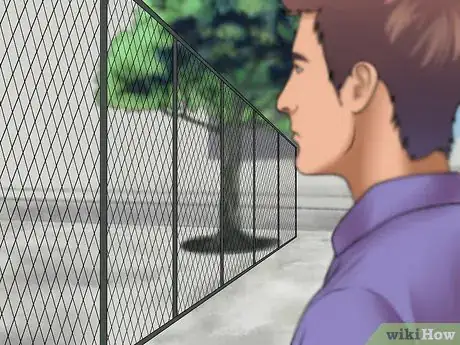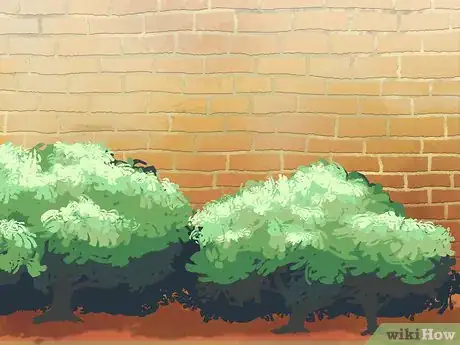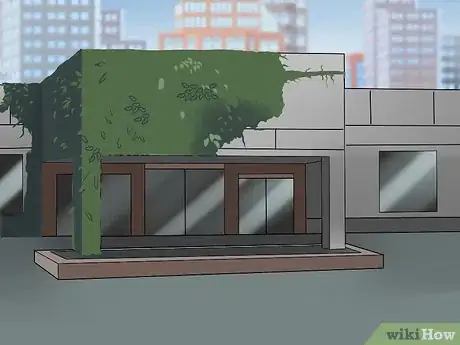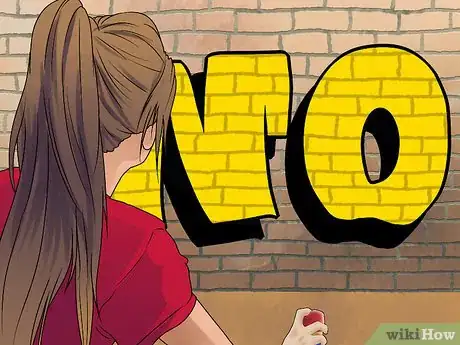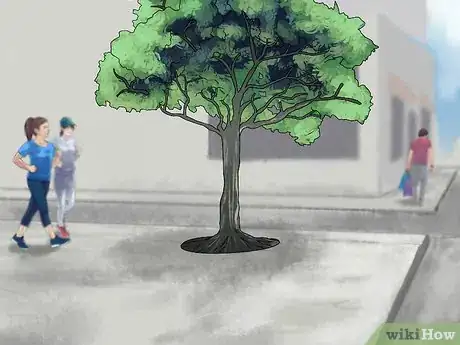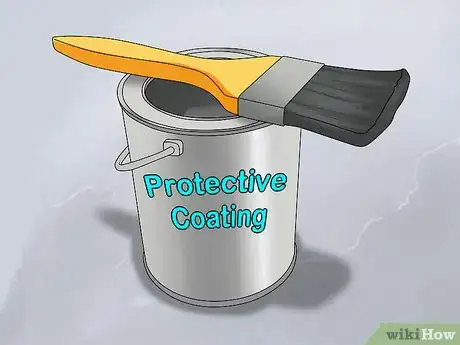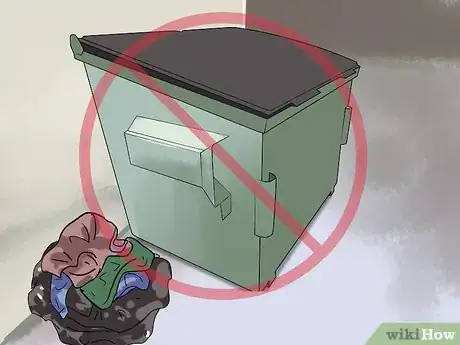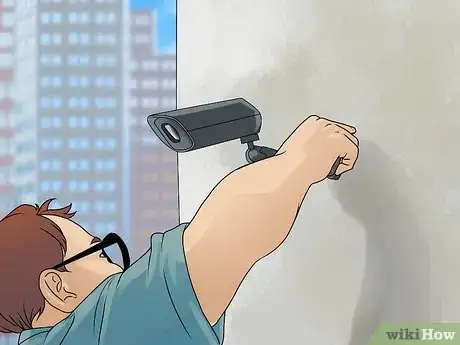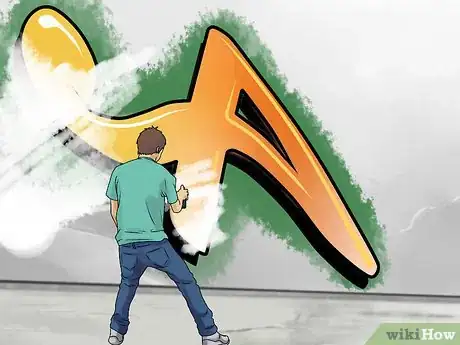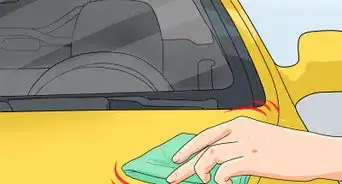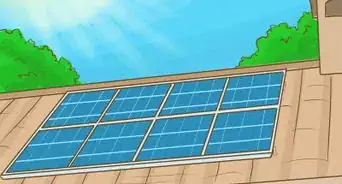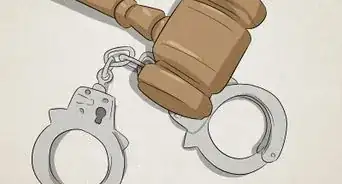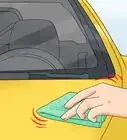This article was co-authored by wikiHow Staff. Our trained team of editors and researchers validate articles for accuracy and comprehensiveness. wikiHow's Content Management Team carefully monitors the work from our editorial staff to ensure that each article is backed by trusted research and meets our high quality standards.
This article has been viewed 73,882 times.
Learn more...
Graffiti is a problem for both business and residential property owners. Minimize access to your space by using fences, gates, and foliage. Also be proactive by keeping your property clean and neat. Work with local authorities and your neighbors to develop a graffiti prevention strategy in your area. If your property is vandalized by graffiti, remove it as soon as possible.
Steps
Minimizing Access to the Space
-
1Create barriers. Install fences, gates, or locks to prevent easy access to an area. If you already have a wood fence that is not working, consider installing a metal fence or a chain link fence that is less attractive to a graffiti artist.[1]
- Paint your fence as well. Unpainted fences attract graffitists.[2]
- Consider a privacy fence or gate to protect your home or small business.
-
2Cover with plants. Cover a space with vines, plants, or shrubs. Plants add to the beauty of a property and will make it more difficult for someone to reach the surface. Graffitists want an area with easy access.[3]
- You can also place a sign that says “Beware of poison ivy.” Most people are not able to identify poison ivy, and they may avoid the area all together.
- Thorny bushes such as roses, barberry, and pyracantha are an extra deterrent. They cover the area and are painful if someone tries to walk through them.[4]
Advertisement -
3For example, if you have a business with a large empty wall, you may plant vines on the roof of the building that cascade down the side.
- If you have an exposed fence, you could plant bushes in front of the fence.
-
4Paint a mural or graffiti art. Ask local artists or students to come and paint your walls. If you're a business, ask them to create advertising for you. A covered wall is much less inviting. If you're a homeowner, consider painting on any exposed areas such as walls and fences. Even patterns can serve as a deterrent because they take away the "blank canvas" appearance.[5]
- Involving local artists and high school students also creates a sense of community and provides a positive outlet.
Being Proactive
-
1Keep property clean and neat. Properties that are not well kept tells others that you do not care about your property. Vandals are more likely to put graffiti on these properties because they think that they can get away with it. Broken fences, unkempt landscaping, and litter are all signs that you do not care.
- Keep the spaces around your property clean as well.
-
2Use protective coating. Coat vulnerable surfaces with anti-graffiti coatings to prevent damage. While the coating will not stop someone from damaging the surface, it will be much easier to clean and will result in much less damage. Coatings are either “sacrificial” or “barrier.”[6]
- Barrier coatings are the most prevalent and they are permanent.
- Sacrificial coatings are not permanent and must be reapplied after the graffiti has been removed.
- The type of coating you use will depend on the type of surface you are trying to protect. You can find these coatings at hardware and paint stores.
- These coatings can damage the surface. Speak with a professional at the hardware store or a professional painter or contractor to find the best option for your property.
-
3Improve the lighting. Graffiti artists like to work in the dark where other people can’t spot them. By increasing the lighting, you decrease the desirability of your space as a canvas. Motion-detecting lights are a good way to save on energy while still getting the much-needed lighting effect.[7]
- Place the lights in hard to reach places. You do not want your lights to get vandalized as well.
-
4Limit access to your roof. If you are a business, move your dumpsters away from the walls of the building. Cover your drainpipes to prevent people from scaling them. Also, check for movable objects such as benches. Graffitists are always looking for items that give them access to lights or signs where they can display their work.[8]
Monitoring the Property
-
1Talk with local authorities. Let your local police know that you are concerned about graffiti in your neighborhood. Point out any vacant properties dimly lit areas and any other places that are prime spots for graffiti. Ask the police to patrol these areas a little more.
- The local authorities may also suggest some other methods of deterrence that you have not thought of.
- Developing a relationship with your local police creates a team approach to deterring graffiti.
-
2Add security cameras. Good quality security cameras are expensive but even cheaper ones have a deterrent effect because people see them and assume that they are being filmed. Erect them where they are obvious and be sure to secure them well.
- Post signs that say “All activity is being monitored.”
- You can even add security cameras and never turn them on. People will automatically assume that they are being watched.
-
3Use a local neighborhood watch. Join up and place the signs about your area. Be sure to do your bit as others help you out too. Attend local meetings to discuss happenings in the area and to come up with ideas for dealing with challenges as a group.
- You can also contact your local Keep America Beautiful affiliate to create a graffiti awareness program for your neighborhood. Call (203) 659-3000 or email info@kab.org.
- Suggest graffiti deterrence as a topic for a watch meeting and invite local law enforcement.
-
4Remove graffiti quickly. If you become a victim of graffiti, remove it within 24 to 48 hours. If you remove it quickly, there is very little chance of it becoming a reoccurring problem. If the graffiti is in a public area next to your property, call your city and county officials to report it as soon as possible.
- Graffiti vandals take pride in their work and do not want it to be erased quickly.
- Graffiti tends to attract more graffiti. So removing it quickly will prevent others from damaging the area.
Community Q&A
-
QuestionIf catching a vandal in the act, is it legal to use physical violence against him both to get him to stop and to serve as a deterrent?
 Community AnswerLocal laws vary from place to place, but in most locations it is not. One must be in danger or act in defense of others to use violence to stop a crime from occurring; damage to property is not often considered a cause for violence.
Community AnswerLocal laws vary from place to place, but in most locations it is not. One must be in danger or act in defense of others to use violence to stop a crime from occurring; damage to property is not often considered a cause for violence. -
QuestionHow we can catch people doing graffiti more quickly?
 Community AnswerInstall security cameras to monitor the high risk areas. Also report the graffiti to your local authorities as soon as it happens.
Community AnswerInstall security cameras to monitor the high risk areas. Also report the graffiti to your local authorities as soon as it happens. -
QuestionWhat are some tips that you can give for a school project about preventing graffiti?
 LilyloversTop AnswererYou could do it in a graffiti style (on paper, not walls!) to get the message across in a visually interesting way if it is a creative project. Alternatively, you could bring in shocking statistics and suggest ways to prevent it on an individual level.
LilyloversTop AnswererYou could do it in a graffiti style (on paper, not walls!) to get the message across in a visually interesting way if it is a creative project. Alternatively, you could bring in shocking statistics and suggest ways to prevent it on an individual level.
References
- ↑ http://www.ci.richmond.ca.us/DocumentCenter/Home/View/610
- ↑ http://www.resene.co.nz/products/antigraffiti.htm
- ↑ http://www.pps.org/reference/graffitiprevent/
- ↑ http://www.csoonline.com/article/2121617/physical-security/thorny-solutions--bushes-and-other-plants-that-deter-trespassing.html
- ↑ http://www.pps.org/reference/graffitiprevent/
- ↑ http://www.pps.org/reference/graffitiprevent/
- ↑ http://www.pps.org/reference/graffitiprevent/
- ↑ http://www.pps.org/reference/graffitiprevent/
